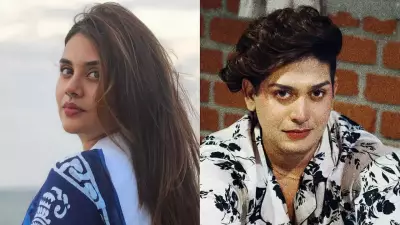
Gangsta rap, the controversial music genre that emerged from America's urban landscapes, has found an unexpected home in India, undergoing significant transformation while maintaining its rebellious spirit. This musical migration represents one of the most fascinating cultural exchanges in contemporary music history.
The American Origins and Global Spread
Gangsta rap first emerged in the late 1980s in the United States, primarily from the West Coast. Artists like Ice-T, N.W.A., and Schoolly D pioneered the genre, creating raw, unfiltered narratives about street life, police brutality, and urban survival. The genre quickly gained notoriety for its explicit content and confrontational style.
What began as a regional movement soon captured global attention. The genre's authenticity and rebellious nature resonated with marginalized communities worldwide. By the 1990s, gangsta rap had become a dominant force in popular music, influencing fashion, language, and youth culture across continents.
Indian Adaptation and Cultural Translation
In India, gangsta rap encountered a vastly different social and cultural landscape. Early adopters faced the challenge of translating the genre's themes to local contexts. Instead of replicating American gang violence narratives, Indian artists began addressing issues relevant to their own communities.
Desi rappers incorporated elements from their regional realities, discussing topics like class discrimination, political corruption, and social inequality. The language shifted from English to various Indian languages, with Hindi, Punjabi, and Tamil becoming prominent vehicles for expression. This adaptation process allowed the genre to maintain its critical edge while becoming more accessible to local audiences.
The Indian version of gangsta rap often blends traditional musical elements with contemporary beats. Instruments like the dhol and tabla frequently appear alongside programmed drums, creating a unique sonic identity that distinguishes it from its American counterpart.
Controversies and Social Impact
Like its American predecessor, Indian gangsta rap has faced significant criticism and controversy. Conservative groups and authorities have frequently targeted the genre for its explicit language and perceived promotion of violence. Several artists have encountered legal challenges and performance bans.
However, proponents argue that the genre serves as an important outlet for youth expression. It provides a platform for discussing social issues often ignored by mainstream media. Many artists use their music to highlight problems like unemployment, caste discrimination, and police harassment.
The genre has also sparked important conversations about artistic freedom and censorship in India. As the scene continues to evolve, it raises questions about cultural appropriation, authenticity, and the responsibilities of artists in addressing social issues.
Despite the controversies, Indian gangsta rap has undeniably influenced youth culture, fashion, and language. It has created new opportunities for artists from diverse backgrounds and continues to push boundaries in the country's music industry.





